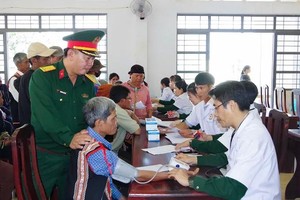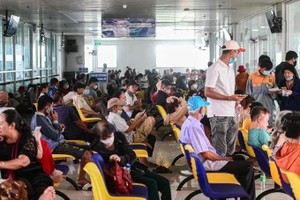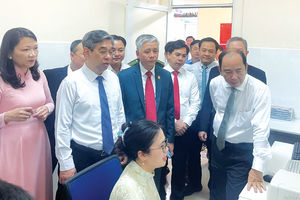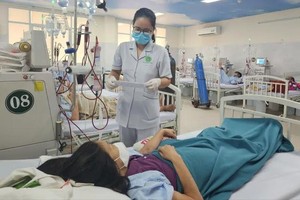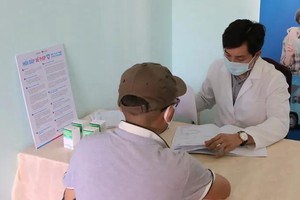However, as per Revised legislation on Health Insurance, the family health insurance premium will rise, raising concerns among many individuals, particularly those from low-income families.

The amendment and supplementation of several articles in the Health Insurance Law represents a significant advancement in ensuring social security, enhancing the quality of healthcare for everyone, and progressing towards the objective of sustainable universal health insurance.
Importantly, this law introduces numerous new provisions that broaden the benefits available to health insurance participants. Furthermore, the law modifies the calculation of benefits and contributions by replacing the previous concept of "minimum wage" with a new "reference level." This change establishes a fresh basis for determining the benefits for health insurance participants, while also providing flexibility and aligning better with current socio-economic conditions.
Specifically, as outlined in Clause 11, Article 1 of the amended Health Insurance Law, it is stated that family members participating in health insurance during the fiscal year will see their contribution levels reduced as follows. The first individual will contribute a maximum of 6 percent of the reference level while the second, third, and fourth individuals will contribute 70 percent, 60 percent, and 50 percent of the first person's contribution level respectively.
For the fifth person and beyond, the contribution will be set at 40 percent of the first person's contribution level. In this context, the reference level (with the basic salary in 2025 set at VND2,340,000 monthly) is the amount determined by the Government for calculating the contribution levels and benefits for certain health insurance participants.
With this new regulation, the family health insurance contribution levels will see an increase. Prior to July 1, the first person paid an annual health insurance fee of VND1,263,600, which will rise to VND1,684,800 after July 1 while the second person's contribution will increase from VND758,160 to VND1,010,800 per year and the third person's contribution will rise from VND631,800 to VND842,400 per year.
Before this information, many people believe that the immediate increase in health insurance payment will increase the burden on people and workers, especially in the context of increasing living costs.
Resident Phan Trong Hieu, who lives in Go Vap District, moaned that his family consists of 5 members, including 3 young children. Both parents are employed as workers, and their total monthly income exceeds VND15 million (US$575), which is allocated for food, housing, and the education of their children. Currently, they are struggling to afford adequate health insurance for the entire family; therefore, the news of an impending increase in payments adds to their concerns.
Synchronizing support policies
According to Head Duong Duc Tuan of the Health Insurance Policy Implementation Department of Vietnam Social Security, there have been so far about 95.52 million people participating in health insurance nationwide, reaching a coverage rate of 94.2 percent of the population. By the end of May 2025, Vietnam Social Security had paid health insurance examination and treatment costs for nearly 80 million people with an amount of more than VND63,300 billion, an increase of 15.59 percent over the same period last year.
Despite high coverage, sustainability remains a concern, with around 50 percent of participants receiving full or partial state budget support. The expanding list of covered services, paid through a service fee mechanism, risks encouraging unnecessary procedures or the selection of costlier options.
Moreover, most of medical facilities are located in big cities and crowded places, making it difficult for people in rural, remote and isolated areas to go to for examination and treatment.
To address these issues, Mr. Tuan suggests enhancing resource efficiency and oversight of the Health Insurance Fund through measures like adopting controlled payment methods, ensuring services meet quality standards, and leveraging information technology for electronic data verification and sharing of diagnostic results across medical facilities.
Amid concerns regarding the expansion of health insurance benefits for participants, particularly for home and remote medical examinations and treatments still covered by the Health Insurance Fund, leaders of medical facilities in districts said that funding health insurance for home medical examinations and treatments not only aids patients but also supports medical facilities.
Director Tran Thi Trang of the Department of Health Insurance at the Ministry of Health noted that the proposed increase in health insurance contribution levels for households could pose challenges for families in maintaining their health insurance coverage, particularly for those with low or middle incomes. Consequently, the State should implement suitable support policies for low-income families, especially those with multiple children or serious health conditions.










